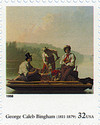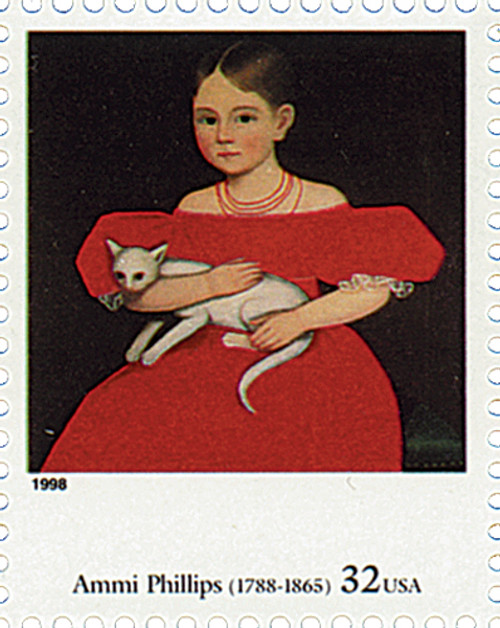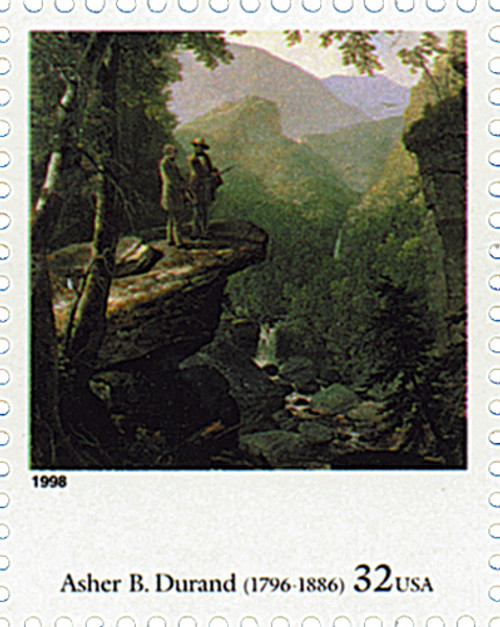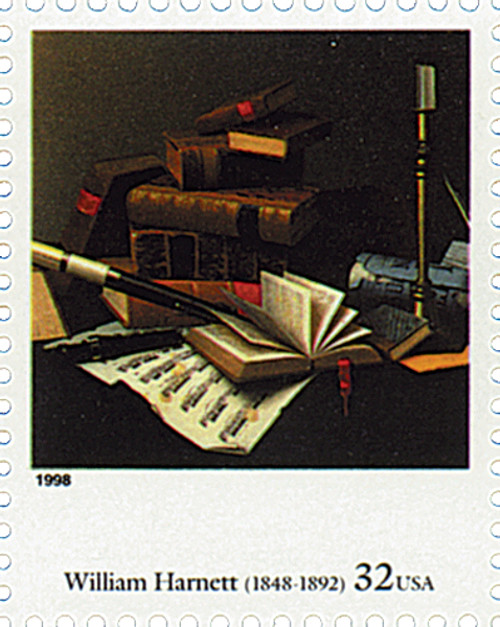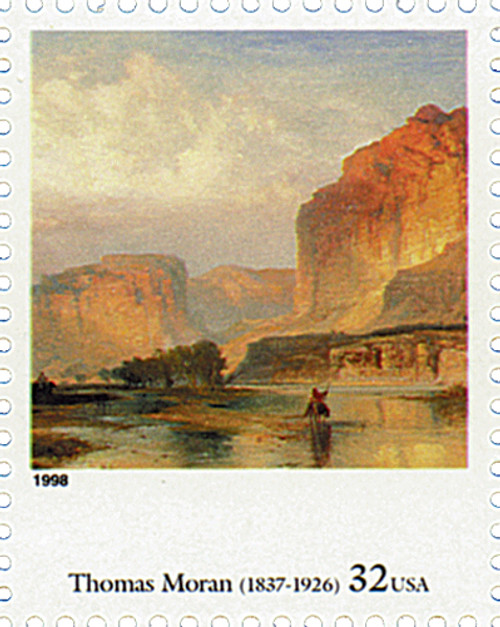
# 3236f - 1998 32c Four Centuries of American Art: George Caleb Bingham
32¢ George Caleb Bingham
Four Centuries of American Art
City: Santa Clara, CA
Quantity: 4,000,000
Printed By: Sennett Security Products
Printing Method: Photogravure
Perforations: 10.2
Color: Multicolored
Birth Of George C. Bingham
When he was eight years old, Bingham and his family moved to Franklin, Missouri, where he spent his childhood. Bingham developed an early love for painting and was largely self-taught. When he was nine he met portrait artist Chester Harding, which was his first significant contact with the art world, and it had a major impact on his life and future career.
Following his father’s death in 1823, Bingham worked as a school janitor to help make money for the family. He then apprenticed with two cabinetmakers while considering a future as a minister or lawyer. But he never gave up on his art, and by the age of 19 was painting portraits for $20 each. He was a quick painter as well, often able to complete a full portrait in just one day.
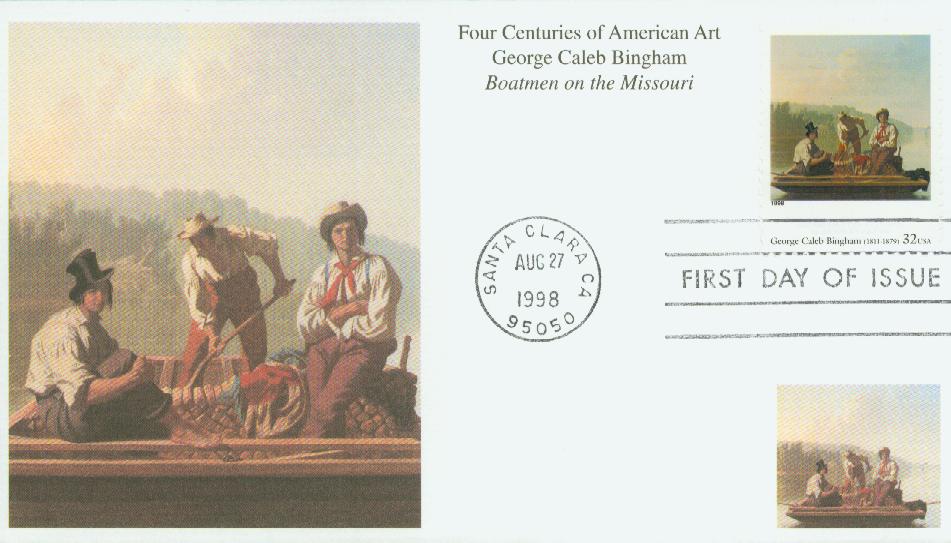
Bingham then established a studio in St. Louis, where he was popular among the citizens and politicians. Also during this time, Bingham studied painting in Philadelphia and visited the National Academy of Design in New York City.
In 1848 Bingham was elected to the Missouri House of Representatives. He continued to paint during this time, and critics contend the artist produced his best work during the next decade of his life. Bingham’s vivid accounts of the rough and lively political life of the frontier and social behavior of men on the river are his most memorable. His best-known river scene is Fur Traders Descending the Missouri, which he completed in 1845.
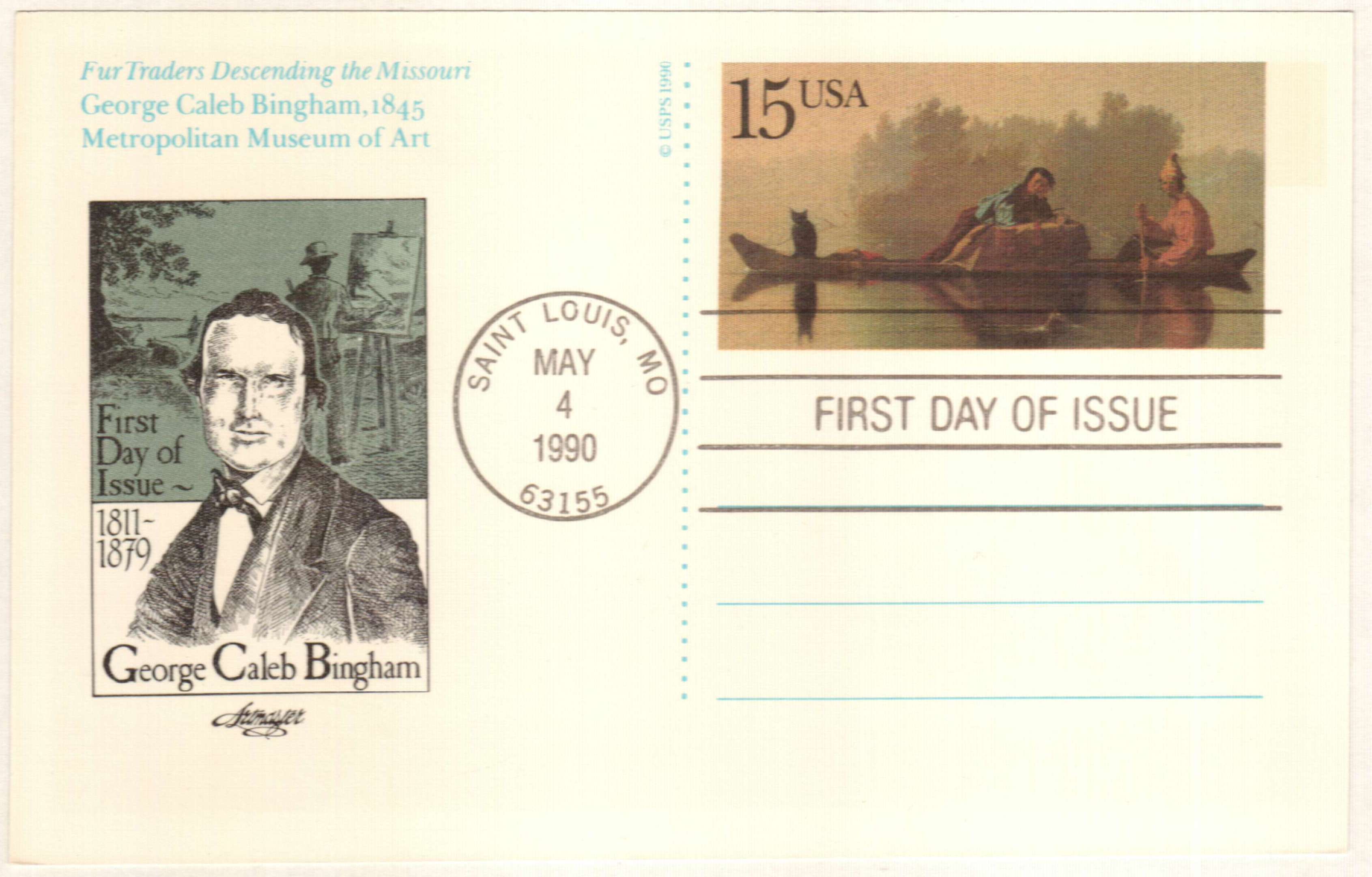
Bingham held several other political offices in the coming years before moving to Europe in 1856. He spent his first few months there studying the Old Masters at the Louvre Museum in Paris, France. He then moved to Germany where he attended the Düsseldorf Academy until 1859. There Bingham befriended German-American artist Emanuel Leutze (who painted Washington Crossing the Delaware). Though working out of Germany, Bingham painted a number of commissioned works for the Missouri State Legislature.
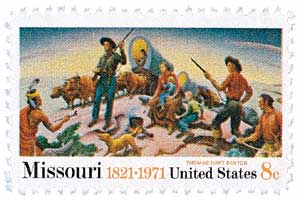
After his study in Düsseldorf ended, Bingham returned to America and resumed his popular portrait painting. He soon had less time for painting though, as he took on a series of political posts including State Treasurer of Missouri, president of the Kansas City Board of Police Commissioners, and Adjutant-General of Missouri. In his later years Bingham suffered a number of health issues, but served as the first Professor of Art of the University of Missouri.
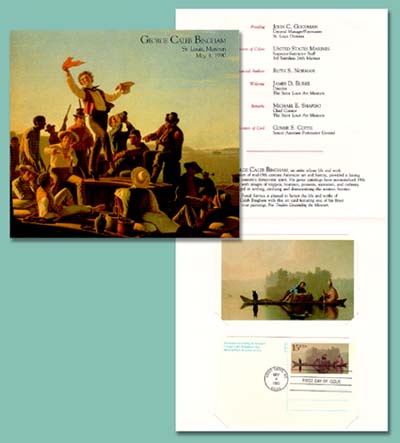
Bingham died on July 7, 1879 in Kansas City, Missouri. His art was largely forgotten for several years after his death, but was rediscovered in the 1930s. In the coming years his work came to be more appreciated and he was eventually considered one of the greatest American painters of the 1800s.
Click here to see a larger version of Boatmen on the Missouri, the painting pictured on U.S. #3236f.
Click here to view more of Bingham’s paintings.
32¢ George Caleb Bingham
Four Centuries of American Art
City: Santa Clara, CA
Quantity: 4,000,000
Printed By: Sennett Security Products
Printing Method: Photogravure
Perforations: 10.2
Color: Multicolored
Birth Of George C. Bingham
When he was eight years old, Bingham and his family moved to Franklin, Missouri, where he spent his childhood. Bingham developed an early love for painting and was largely self-taught. When he was nine he met portrait artist Chester Harding, which was his first significant contact with the art world, and it had a major impact on his life and future career.
Following his father’s death in 1823, Bingham worked as a school janitor to help make money for the family. He then apprenticed with two cabinetmakers while considering a future as a minister or lawyer. But he never gave up on his art, and by the age of 19 was painting portraits for $20 each. He was a quick painter as well, often able to complete a full portrait in just one day.

Bingham then established a studio in St. Louis, where he was popular among the citizens and politicians. Also during this time, Bingham studied painting in Philadelphia and visited the National Academy of Design in New York City.
In 1848 Bingham was elected to the Missouri House of Representatives. He continued to paint during this time, and critics contend the artist produced his best work during the next decade of his life. Bingham’s vivid accounts of the rough and lively political life of the frontier and social behavior of men on the river are his most memorable. His best-known river scene is Fur Traders Descending the Missouri, which he completed in 1845.

Bingham held several other political offices in the coming years before moving to Europe in 1856. He spent his first few months there studying the Old Masters at the Louvre Museum in Paris, France. He then moved to Germany where he attended the Düsseldorf Academy until 1859. There Bingham befriended German-American artist Emanuel Leutze (who painted Washington Crossing the Delaware). Though working out of Germany, Bingham painted a number of commissioned works for the Missouri State Legislature.

After his study in Düsseldorf ended, Bingham returned to America and resumed his popular portrait painting. He soon had less time for painting though, as he took on a series of political posts including State Treasurer of Missouri, president of the Kansas City Board of Police Commissioners, and Adjutant-General of Missouri. In his later years Bingham suffered a number of health issues, but served as the first Professor of Art of the University of Missouri.

Bingham died on July 7, 1879 in Kansas City, Missouri. His art was largely forgotten for several years after his death, but was rediscovered in the 1930s. In the coming years his work came to be more appreciated and he was eventually considered one of the greatest American painters of the 1800s.
Click here to see a larger version of Boatmen on the Missouri, the painting pictured on U.S. #3236f.
Click here to view more of Bingham’s paintings.






